My shopping cart
Your cart is currently empty.
Continue Shopping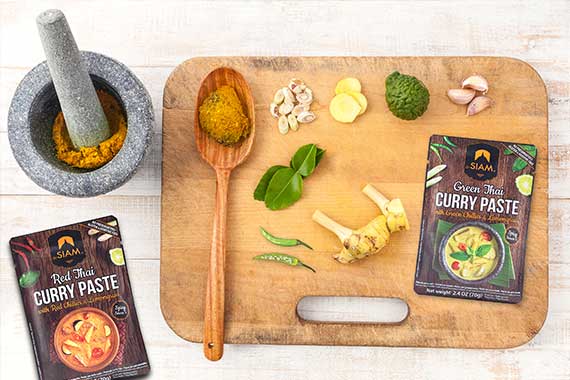
Many people might have curry powder in their spice racks, but it is less likely that they have a jar of Thai curry paste in it. Curry paste is an integral part of many Thai dishes and is a simple way to add a punch of robust flavors to a particular dish effortlessly.
It is an essential part of Thai cuisine, and the fantastic blend of spices aside from curry makes it a much-needed staple in any kitchen. Here's everything you need to know about curry paste.
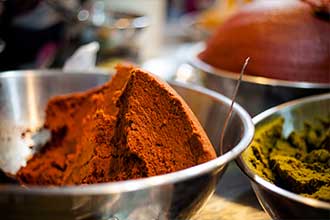
Curry paste is a unique blend of spices of different kinds. Most pastes use the same aromatic herbs and spcies: chillies (frehs or dried), galangal, lemongrass, red shallots and garlic. Additionally, kaffir lime peel, coriander roots or shrimp paste can be included.
Thai Curry paste can have three colors: red, green, and yellow.
These colors are not simply for aesthetics, they usually tell us what these pastes taste like.
Red curry paste is bright and heavily spiced with dried red chilis, a fiery punch!
Green curry paste is made with bright green Bird’s Eye Chili Pepper (Prik Kee Nok / พริกขี้หนูตานก): but don't let the colors fool you! Green curry paste is known to be the most sizzling curry paste of all. Lastly, yellow curry pastes get their color from turmeric and Indian-style yellow curry powder. They thus are the least spicy of the three.
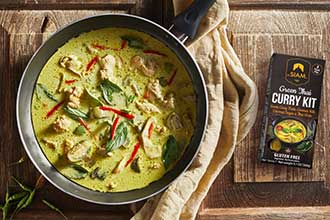
Like what we mentioned above, the colors of the pastes indicate what they taste like. For example, as the least spicy type, yellow curry paste usually tastes slightly sweet and homely. Still, it can depend on the variety of chilies used in making the paste.
Meanwhile, green curry paste has a mild and balanced flavor-rich and the most herby of the bunch. It is considered the most popular curry paste among the three. Lastly, red is fiery yet rich. It tastes spicy, but it has substance in it. It's not dry spicy, unlike many chili-based pastes.
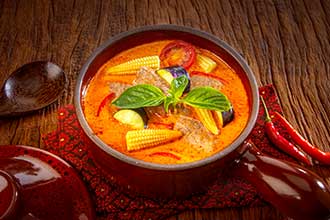
Simply use in curries by stir-frying the paste with protein or vegetables, then adding creamy coconut milk. You can also use it to build flavour in soups and stews.
Thai curry paste can also be used as a rub or a marinade for meats such as chicken, fish, or beef. Indeed, Thai curry paste can transform most dishes from bland to grand in seconds.
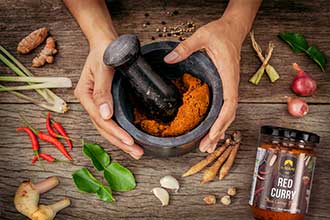
If you’ve decided to make homemade Thai curry paste, you’ve already decided to take on a bit of a project by tracking down and preparing your ingredients. It is a time-consuming process that requires ingredients that aren’t always easy to find. The traditional method for making Thai curry paste is to pound everything together using a mortar and pestle, but food processor will finely chop the ingredients too.
Making curry paste from scratch, is a long road ahead... So it’s okay to give yourself a break: you can use our ready to cook deSIAM authentic curry pastes.
They are free of allergens, do not contain any preservatives, food coloring, or additives!
An amazingly fragrant chicken coconut curry broth.
Uncompromisingly rich and creamy, this signature Northern Thai soup combines a coconut curry broth with tender shredded chicken and boiled noodles.